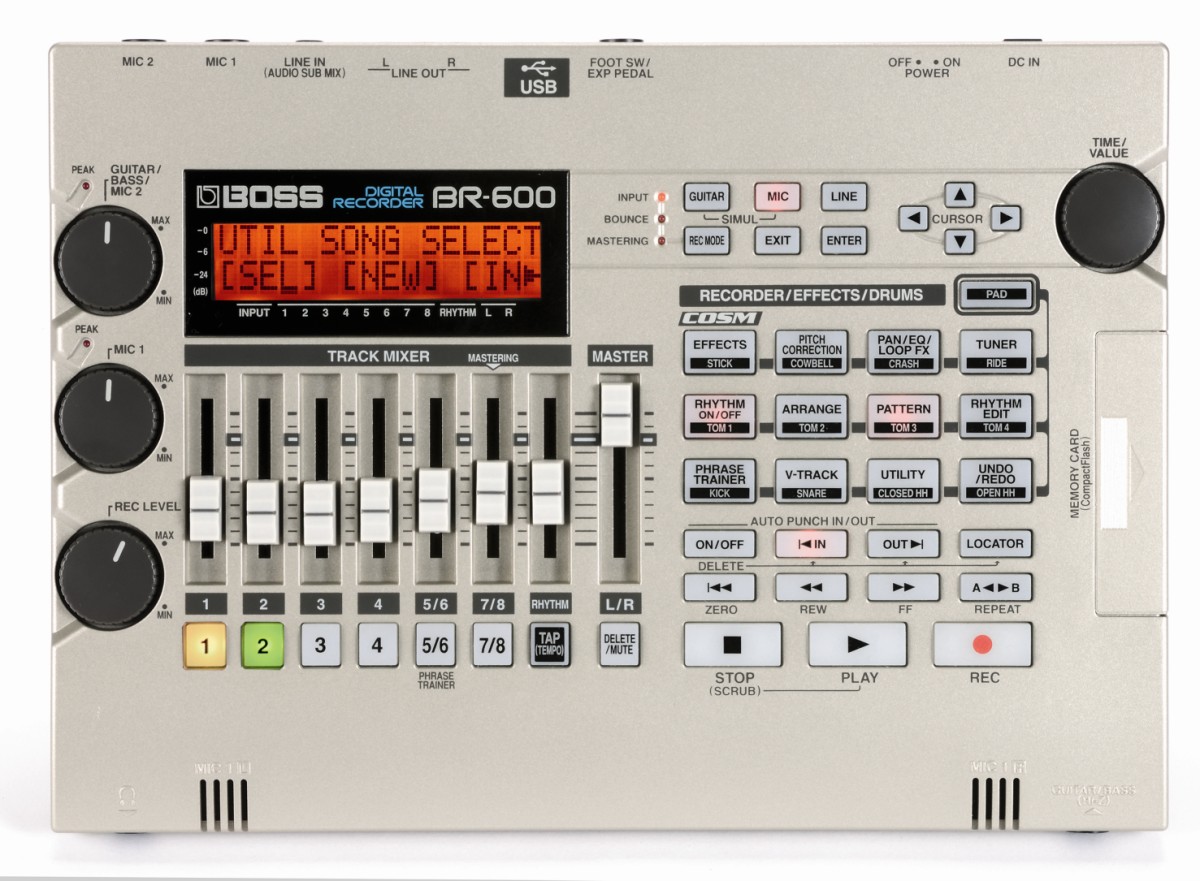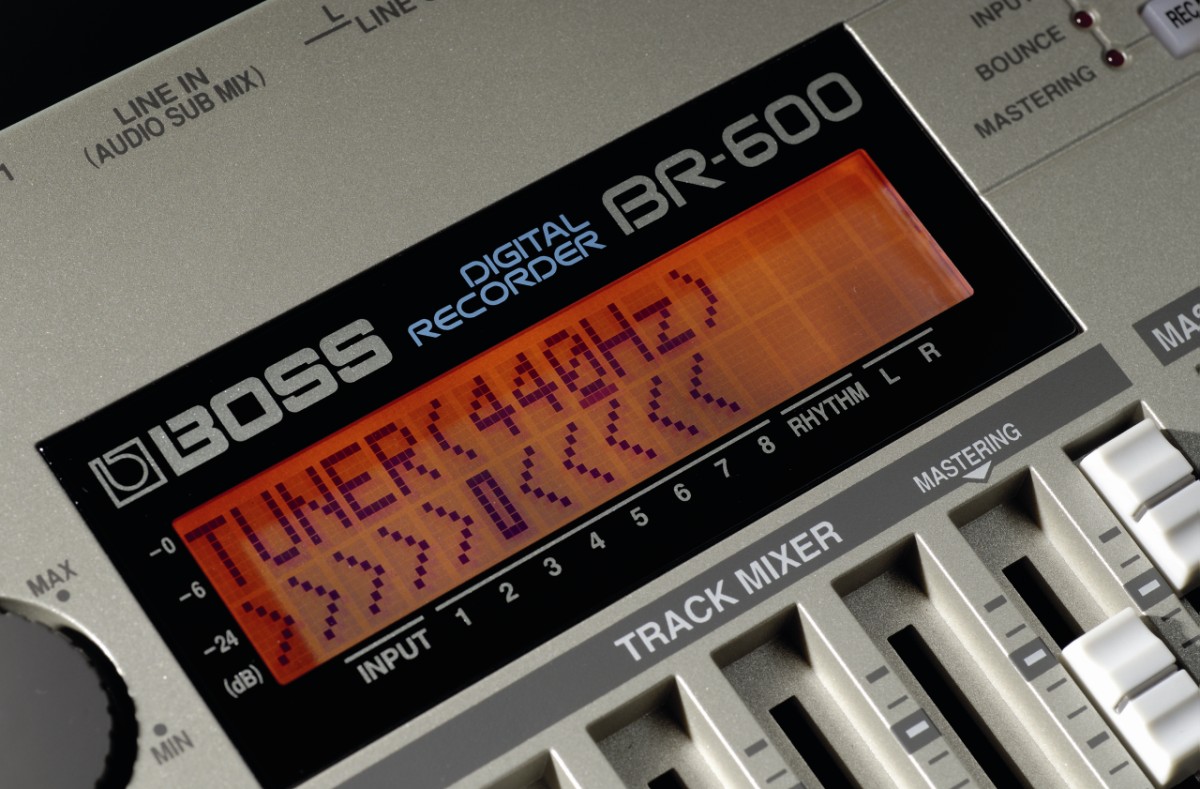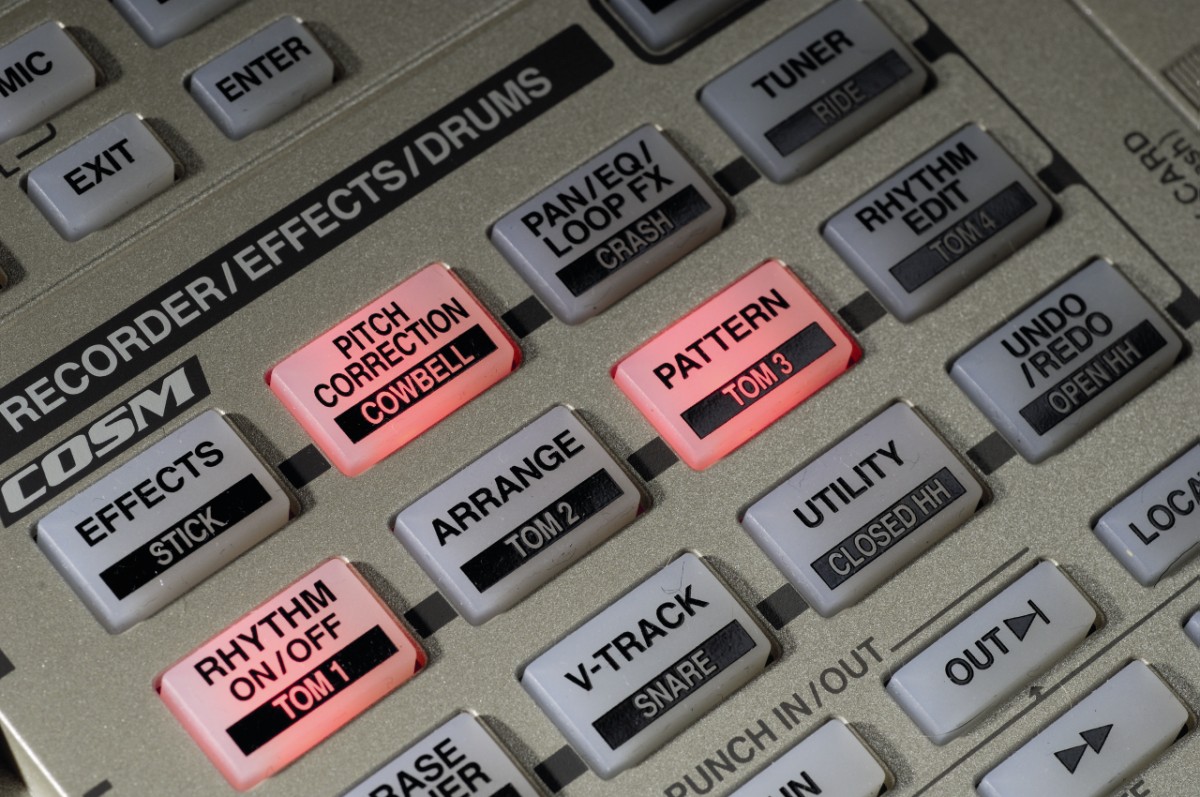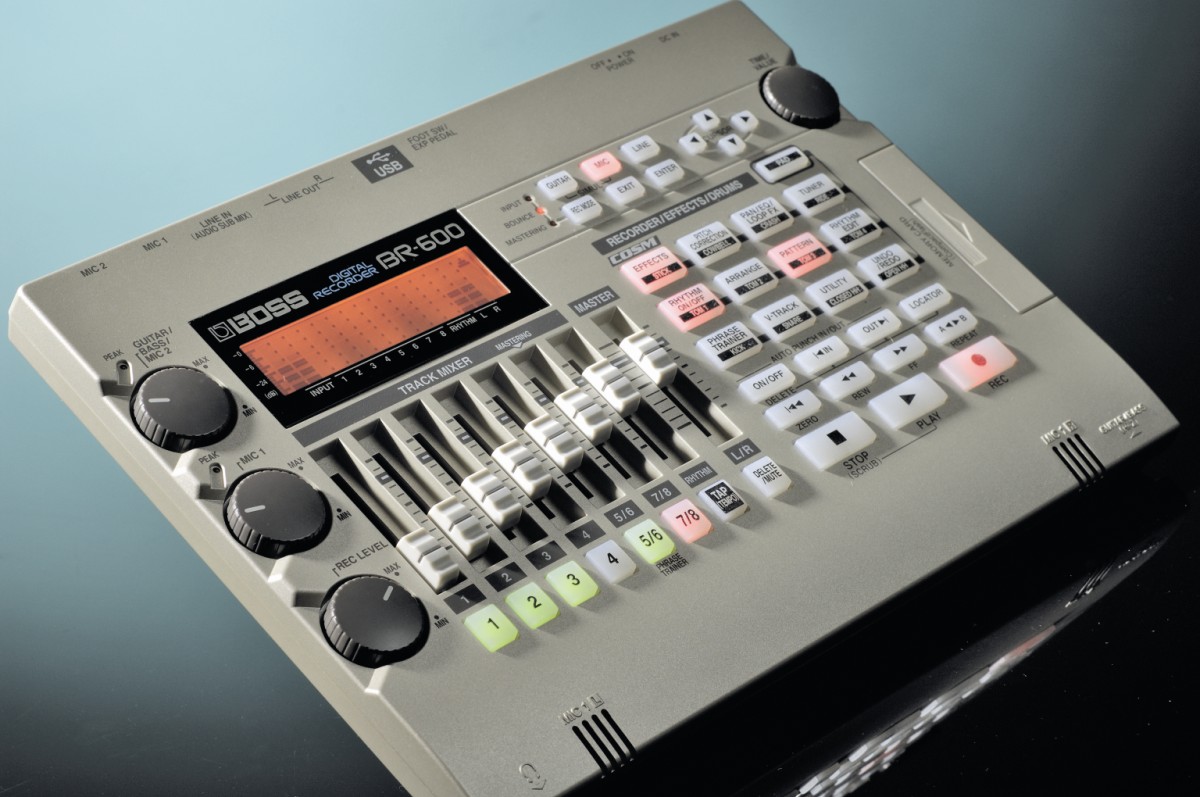MusicRadar Verdict
An excellent all-round asset for any guitarist, whether to produce demos or simply just practice.
Pros
- +
Extremely portable. Easy to use. Useful selection of COSM amp selections
Cons
- -
Power adapator and CompactFlash cards add extra cost.
MusicRadar's got your back




The Boss BR range of multitrackers has a great reputation for being easy to use, even for someone new to recording. They also have a certain 'Toy' chunkiness to their looks that seems to support that role. Not so the new BR-600, which eschews the pumped-up look for a thinline slickness that vibes portable sophistication. However, has the facelift meant the loss of some of the practicality?
The BR-600 is an eight-track machine that can record two tracks simultaneously through a pair of input channels linked to balanced jack inputs or a pair of built-in microphones. The tracks are arranged as four mono and two stereo tracks, rather than eight wholly independent mono tracks, but there's a full quota of 64 virtual tracks so alternative takes can be stored.
The obvious scheme has been to make the BR-600 portable, hence the compact size and the fact that it can be run from battery power. In such a role, an internal hard disk would have been inappropriate, so recording takes place on a lightweight, removeable CompactFlash card - anything from 32MB up to 1GB (a 128MB card comes supplied as standard). There are three selectable recording modes that use increasing amounts of data compression, with a 32MB card providing 16 minutes' single-track recording of the highest quality and 24 minutes at the lowest, while a 1GB card will give 520 and 784 minutes. As with the other BR machines, Boss has made the guitarist's needs paramount, and so there's a dedicated Hi-Z input on the front panel for plugging in and making use, if desired, of a large range of Roland's COSM-modelled amp simulation and effects. An onboard chromatic tuner is also featured, as is hands-free recording by footswitch (an optional extra) or by programming automatic punch-in and out points. Also useful for guitarists is a built-in phrase trainer. A rear-panel line input allows a CD player or the like to be connected so that any tracks can be recorded into the BR-600 so you can play along with them. Tracks can be slowed down without any changing of the pitch and there's a centre-cancelling function that aims to remove any centrally panned lead vocal or guitar solos.
Rhythm facilities haven't been skimped on the BR-600 - there's a separate rhythm track and a whole bunch of preset rhythm patterns covering all styles, and these can be chained together to provide a complete backing track for a song. You aren't restricted to the presets, though, as original patterns can be written courtesy of a set of squidgy front-panel drum pads.
Eight audio tracks, plus the rhythm track, may be all you need to put a decent recording together, but bigger arrangements can be built up by bouncing, whereby you can mix up to eight tracks down to a spare virtual track. There's also plenty of editing scope, with all of the expected cut, copy and paste functions that allow you to move segments of audio around. Tweaking the sound of individual tracks is helped by a two-band EQ and send-and-return (loop) effects covering reverb and a choice of delay, chorus or doubling.
There's also a pitch correction effect, designed to retune any vocals that might be a bit dodgy. The finished mix is mastered onto a spare pair of virtual tracks, where a final mastering effect can be applied, utilising compression and EQ to get the sound as powerful as possible. A finished mix can be ported out of the BR-600 line outputs, but there's also a USB connection that enables any audio to be sent to a computer while being converted to a WAV or AIFF file. Backup of other BR-600 audio and data can also be done via USB, as can the loading of WAV files into the BR-600.
In use
It has to be said that the BR-600 is a very useful size and weight for carrying around and for use on a tabletop or the knees. There aren't any problems due to its reduced size either - the layout is neat, with all major functions clearly labelled. Getting started with recording is just about as straightforward as it comes - this latest BR has lost none of the range's functionality. More practicality comes from the inbuilt microphones. Having these means that you can easily record a quick vocal or acoustic guitar part, and can also quickly hum any musical ideas that come into your head and record them straight away, without having to mess around with plugging in an instrument or an external mic.
Alternatively, you can take the BR-600 down to the rehearsal room and easily make a warts and all stereo recording of a band practice.
With 99 insert effects patches dedicated totally to electric, acoustic and bass guitars, there are instant amp sounds available for all styles, from the clean spaciousness of a Roland JC120 with chorus, through to Fender, Vox and Marshall tonalities, and full-on, hi-gain metal. There are also plenty of effects that can be dialled in, all of which can be extensively edited, plus patches that simulate the sound of acoustic or bass from a standard electric. There's no need for a dedicated amp simulator to work with the BR-600 - it's all there already, so much so that with a set of headphones plugged in, you have a great range of sounds purely for playing, whether you choose to do any recording or not. With the authentic-sounding preset rhythms also on tap, there's always something solid to play along to. And if the presets aren't what you want, there's sufficient scope to hit the pads and create an original rhythm backing for any song you want to record.
Recording quality isn't at all bad, even in the Long Play mode, and with care, knocking out reasonably powerful demos is every bit as much of an option as using the unit as a musical jotter pad for working out arrangements or storing fresh ideas. There's not a lot that can be said on the negative side, apart from the fact that there's no phantom power, but the BR-600 probably isn't the sort of unit you'd want to be plugging expensive condenser mics into anyway.
MusicRadar is the number 1 website for music makers of all kinds, be they guitarists, drummers, keyboard players, djs or producers...
GEAR: We help musicians find the best gear with top-ranking gear round-ups and high- quality, authoritative reviews by a wide team of highly experienced experts.
TIPS: We also provide tuition, from bite-sized tips to advanced work-outs and guidance from recognised musicians and stars.
STARS: We talk to musicians and stars about their creative processes, and the nuts and bolts of their gear and technique. We give fans an insight into the actual craft of music making that no other music website can.
“I called out to Mutt and said, ‘How about this?’... It was a complete fluke": How Def Leppard created a rock anthem - with a little bit of divine intervention
Baby Audio's Smooth Operator spectral balancing plugin goes pro
"It was ugly, like watching a divorce between four people. After a while, I had to get out": Beatles engineer Geoff Emerick on the recording of Abbey Road, track-by-track










